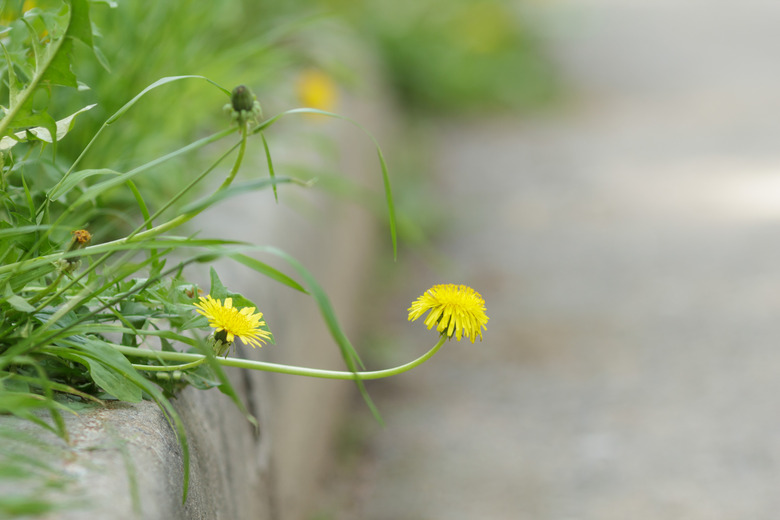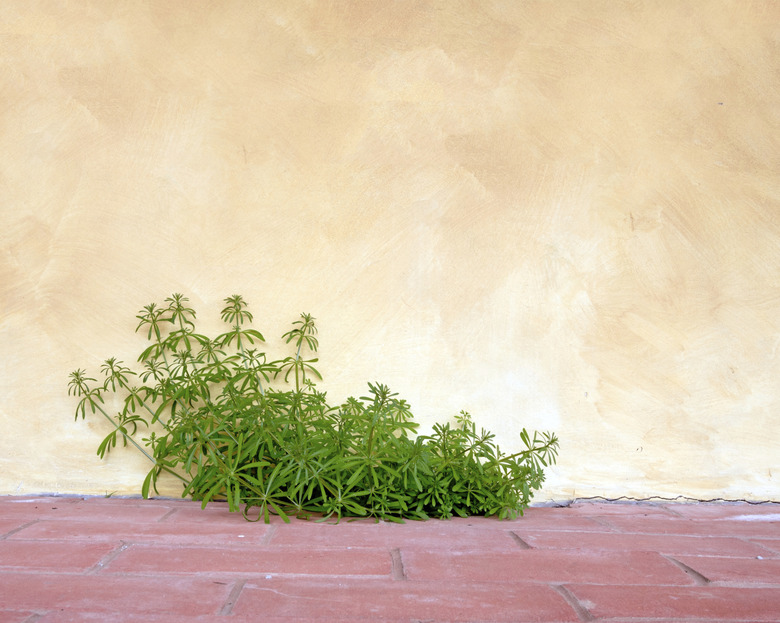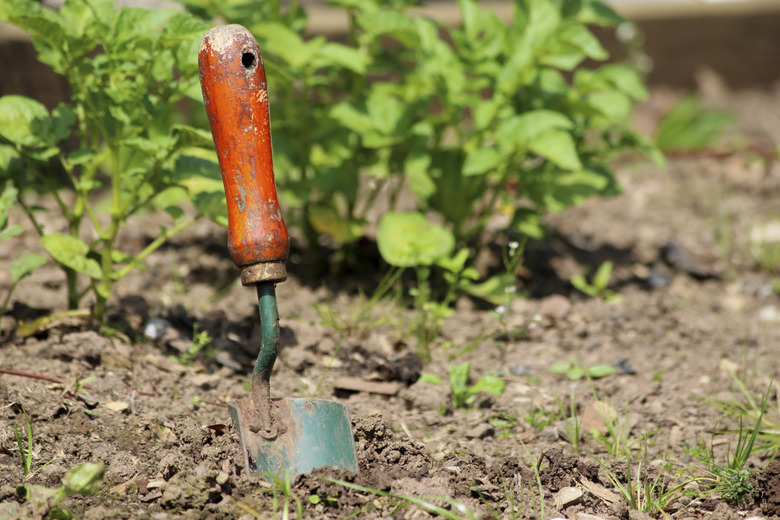Common Lawn Weeds In Texas
There are no shortage of weeds within Texas' borders. Encompassing U.S. Department of Agriculture plant hardiness zones 6a to 9b, Texas contains several lawn weeds common to yards throughout the state. For lawns with a broad range of weeds, herbicidal treatment can be tricky. For example, weed killers that work on grassy weeds will also kill grass lawns. In addition, annual weeds respond best to pre-emergent chemicals — so by the time you spot them, it's too late. Your best bet is to cope with individual weeds, and to let their presence spur you to maintain the kind of healthy lawn that chokes out weeds.
Step 1
Dandelions (Taraxacum officinale, U.S. Department of Agriculture plant hardiness zones 1 to 1) appear first as long, narrow foliage with toothed edges, followed by the familiar yellow flowers. Plantains (Plantago major and P. lanceolata, USDA zones 1 to 11) bear rosettes of fleshy, ribbed leaves that are either oval or narrow and sharp-ended, depending on the species. Controlling dandelion and plantain spread is best done by digging as far down as possible and removing the entire taproot. The large leaves of lambsquarters (Chenopodium album, USDA zones 1 to 11) are somewhat triangular, but with rounded sides. Their undersides are coated with cornmeal-like substances. They bear spiky white flowers. The best way to control lambsquarters is to pull them before they flower and set seed.
Step 2
Step 3
- Dandelions (Taraxacum officinale, U.S. Department of Agriculture plant hardiness zones 1 to 1) appear first as long, narrow foliage with toothed edges, followed by the familiar yellow flowers.
- Plantains (Plantago major and P. lanceolata, USDA zones 1 to 11) bear rosettes of fleshy, ribbed leaves that are either oval or narrow and sharp-ended, depending on the species.
Small Broadleaf Baddies
Step 1
Purslane (Portulaca oleracea), an annual weed, has tiny, succulent leaves that grow in mats. You'll often find petite yellow flowers among their creeping foliage when the weed is found on sunny parts of the lawn. Because they spread so aggressively through seed and underground runners, the best way to control the plants is to cultivate a healthy lawn. Annual chickweed plants (Stellaria media) are also small-leaved and sprawling, but their leaves are less fleshy than purslane, and they produce delicate-looking, fringed -petal flowers. They can be individually removed by deep digging. As with purslane, the strongest defense against chickweed is the offense of maintaining a healthy lawn.
Grassy Rascals
Step 1
An annual weed, goosegrass (Eleusine indica) is a sign of heavily compacted soil. The bushy, low-growing clumps with thick stems emerge in areas of heavy foot traffic. Aerate the soil to decrease compaction. Annual bluegrass (Poa annua) dies at the height of summer, but until then is a troublesome weed in lawns. It grows in fountain-like clumps about 6 inches tall with seed heads at the end. Hand pulling annual bluegrass and cleaning mowing equipment to prevent seeds from migrating to other parts of the lawn provide control. Annual crabgrass species (Digitaria spp.) are sprawling grassy clumps that are easy to spot because they are much lighter than lawn grass. Mow frequently to prevent these annual weeds from setting seeds, which will cause them to appear less frequently over the years in healthy lawns.
Step 2
Step 3
- Purslane (Portulaca oleracea), an annual weed, has tiny, succulent leaves that grow in mats.
- Mow frequently to prevent these annual weeds from setting seeds, which will cause them to appear less frequently over the years in healthy lawns.
Sedge Scourges
Step 1
Nutsedge (Cyperus spp., USDA zones 1 to 11) weeds are often confused with grass or grassy weeds, but the leaves are thicker and stiffer than grass. Additionally, nutsedge leaves are arranged in groups of three from the base and grow from small underground tubers. Young nutsedge is encouraged by damp conditions, so the presence of nutsedge on the lawn may indicate over-irrigation. Once the weeds are established, the best way to eradicate them is to dig down at least 8 inches and remove the entire plant, "nut" tuber and all.
References
- Texas A&M Agrilife Extension Service: Broadleaf Weed Control
- Texas A&M Agrilife Extension Service: Grassy Weed Control
- Dallas News: Get to Know 14 Weeds Every Texan Hates
- Neilsperry.com: Tips for a Terrific Turf
- Plant Maps: Texas USDA Zones
- University of California IPM: Weed Database
- USDA: Plants Profiles



